Walkabout: Manhattan After Sandy
Day four of the aftermath of the devastating and deadly superstorm saw a Manhattan eager to get back on its feet.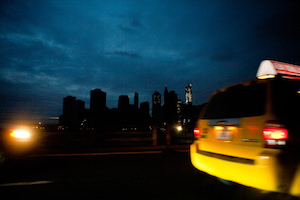
NEW YORK CITY — Day four of the aftermath of Hurricane Sandy saw a Manhattan eager to get back on its feet. I took a crowded bus into the East Village on Friday from the Bushwick neighborhood in Brooklyn, where residents were spared the worst of the disaster. A downed Internet connection, suspended mail service and no trains into the city were the inconveniences much of my neighborhood had awakened to on Tuesday morning. As family and friends confirmed over the telephone, we were lucky. In addition to subway access, most of lower Manhattan lost electricity and water service, and for four days, neither members of the city government nor the utility companies seemed to know when they would get them back.
The shuttle bus dropped me at the corner of Essex and Delancey just after 10 in the morning. A police officer wearing a bright yellow vest waved traffic through the middle of the intersection. The streets were not bare like a ghost town. Cars rumbled down the road, stopping to let pedestrians and other cars go wherever traffic lights would have been and a traffic cop was not. Many people wandered the sidewalks, but no one seemed anxious. As I made my way through Chinatown, clouds periodically obscured the sun overhead.
Rolling metal gates covered many of the storefronts. A few others, clothing stores mostly, were open for business. Those I walked into had a strong security presence. If uniformed cops weren’t stationed outside, there were tall, alert, stern-looking men pacing up and down aisles illuminated by mounted construction lights, standing in for the security cameras and fluorescents that are usually enough to deter all but the most brazen shoplifters. Without a regular source of heat, shoppers and employees were bundled up against temperatures in the mid-40s. The loud sputtering of generators, powering both the open stores and the food carts that usually rely on them, could be heard up and down the sidewalks. Most of the storefront windows had been covered with large asterisks of tape to prevent glass from spraying into the street in the event they shattered.
The lights came back on when I reached the Financial District. I was drawn to the area in hopes of seeing an underwater Wall Street being literally bailed out by public workers, but it appeared I was a day or two late. People who seemed to be tourists crowded the sidewalks, snapping pictures of the tattered material that covered the unfinished levels of One World Trade Center. A window panel high up seemed to have come loose, while one on another building under construction had come off completely. More grim-faced guards patrolled metal barriers that had been placed around the New York Stock Exchange, which had reopened a few days earlier. Resolute demonstrators camped beneath the scaffolding outside Trinity Church were honoring the vow heard around corridors of the district for over a year now: “All day! All Week! Occupy Wall Street!” A Starbucks was open in the lobby of the Brookfield Properties building that towers over Zuccotti Park, birthplace of the Occupy movement. There I paid full price for a croissant that tasted at least a day old.
The blackout returned as I walked into Battery Park City. The area was flooded at the height of the storm, but it was calm now. Kids played soccer in a park on the banks of the Hudson River while young professionals in spandex and plugged into their iPods jogged through the scene. A large, dark military helicopter appeared, lumbering slowly overhead. I wondered what exactly its occupants were doing getting a bird’s-eye view of things, and whether they would be replaced in years ahead by unmanned surveillance drones.
The Tribeca neighborhood was calmer and more desolate than others I had yet seen. If the neighborhood’s typically well-off residents were waiting out the scarcity of amenities up in their apartments, they gave no outward indication of their presence. A young man smoking a cigarette at the side entrance of an apartment building and what appeared to be a gallery owner checking his stock were among the few people I saw.
But things came alive at the neighborhood Whole Foods store. Employees in chef’s tunics were barbecuing chicken breasts and beef patties outside the entrance. I bought a burger and walked inside. Business was brisk. All of the food one could want was there. A manager named Steve told me that at least 60 employees came to work the day after the storm.
“They just showed up and said: ‘What can we do?’ And we’ve been feeding them, taking care of them and making sure everyone is happy,” he said. The company has been busing in employees who live far away and reimbursing others who take cabs to work. The cashiers I spoke to were eager to talk. One bright-faced, middle-aged woman explained that she lives in New Jersey and has no running water at home.
“I’d like to take a shower this week,” she said, smiling.
As I left the store, small crowds were gathered here and there around electrical outlets. Some stared desperately into their smartphones. Others laughed while their phones and laptops were charged. At an upscale condo down the street, a crew of lobby guards explained how the floodwaters had come in.
“It was all the way up to here,” said a man who stood about 6-feet-5, holding his hand at waist-level. “You can see there wasn’t much damage on this floor. It came into the building and went down into the elevator.”
The water had poured into the complex’s basement parking and storage facilities, completely filling the 15-foot-tall space where residents’ artworks, family photo albums, books and other precious belongings were kept. The guards said everything they had recovered in two days’ worth of pumping was destroyed.
“We’re not done yet,” one said. “We think there still might be some cars down there.”
Walking through SoHo, I came upon a small crowd at a street corner. As I passed, a man caught my attention and offered me some of the fruit, vegetables and hard-boiled eggs that were sitting out. Thinking he was trying to sell the stuff, I declined and kept walking. But then I realized he wasn’t selling the food; these were people who worked at a restaurant on the corner and they were giving away all of the food that hadn’t gone bad. The spread wasn’t limited to a few oranges and some kale. They were giving away gold-dusted peanut butter truffles, once-molten chocolate cake, tarts and cookies and small bouquets of flowers.
I moved in for a truffle, a rare treat for an independent journalist. Josh Capon, executive chef of the Lure Fish Bar and the man who had offered me food, shoved a white paper bag into my hand. I couldn’t accept any more, I explained, as I was already violating my food allergies. Others who had stopped by were poring over the food in a state of mild astonishment.
I asked Capon if the cops had given him any trouble. Other restaurant and grocery store workers I had spoken to had told me health codes forbade them from giving away most of their food. A few police cars rolled by, he said, but no one had interceded.
“People are just so grateful for whatever we can give them,” he said in a hearty, gravelly voice. “They come and ask for water to flush their toilets upstairs. And these are people who live in the neighborhood.” He seemed to be fighting back happy tears.
A few steps away, a large contingent of the restaurant’s exclusively Hispanic kitchen staff was standing in the street. Capon walked over to them and explained that he didn’t know when their paychecks would arrive.
“Monday,” he ventured. “But I need you guys to be ready as soon as the power comes back on. I’m gonna get shipments in first thing and we’re gonna need to jump on it.”
Lining the edge of the sidewalk next to them was a row of garbage bags piled waist high, food that had gone bad and had to be thrown out in the wake of the storm.
“These guys work so hard,” Capon said, shaking his head. “Times like this, we all gotta help each other out.”
Up at a residence building for faculty members of New York University, a guard explained that he and the building’s maintenance workers were forced to leave their homes in the outer boroughs extra early to make it to work on time. Mayor Michael Bloomberg had banned vehicles carrying fewer than three people from entering the city before 6 a.m. These men had to make it into Manhattan in the predawn darkness to beat the ban.
“Some of these guys are nearing retirement age, 60 to 65,” the guard said. “One is even 70 years old. And they’ve gotta show up to work in the neighborhood here where the street lamps are out, before the sun rises. I don’t know if you’re familiar with it, but this place is dangerous with the lights on. We all want to keep our jobs, so for most of us, that’s a risk we are willing to take.”
He said he didn’t personally know of anyone being robbed or attacked, but that he had heard stories of assaults taking place in the nights after the storm within a few blocks of his building. He seemed happy that someone was there asking about his experience.
I was looking forward to what I would find up ahead at Union Square. Its location, midway between the southern tip of Manhattan and 34th Street, makes it a popular gathering place for people eager to talk anytime something big has happened in the city. Getting there took me through Washington Square Park. A few students and couples sat around the fountain and at the tables meant for chess games, but the center of the park and pathways were populated mostly by homeless people. They sat on benches in soiled, raggedy clothes, most of them just staring blankly around. Some were curled up on the ground with their eyes closed. The two that I approached were not interested in talking, so I continued toward Union Square. Police had placed barrier tape around Union Square Park, presumably to make their jobs easier. I walked up to a subway entrance where a number of people were peering in.
“The rats,” a woman next to me said. “You know things are bad when the rats are coming out of the subway.”
The entrance to the platforms at the base of the stairs was dark. A white-shirted officer carrying a flashlight charged into the darkness in pursuit of something mentioned on his radio. Covering the marches and protests of Occupy Wall Street months earlier, I had learned that NYPD officers on duty were under orders not to speak to the press. And while one officer on this day confirmed that the prohibition still applied, he was more than happy to smile widely and joke with me and others nearby about the boredom of standing guard in a stiff uniform that left him longing for a sweatshirt and a pair of jeans and the company of his family back home.
Not far away, a large Guardian Data Services truck was parked, with a huge generator humming from inside its cargo bay. GDS specializes in converting large amounts of data from old formats, like reel-to-reel and floppy disk, to modern technologies. A crowd of people had gathered to charge their laptops and cellphones. I asked a man in a GDS cap why he and his co-workers weren’t busy backing up servers at the Stock Exchange. He grinned and explained that they had nothing else to do.
“We thought it was important to come down here and provide this public service,” he said. “We’ve got the means to, so why not?”
This was their second day in the park, and he told me they planned to return the next day if they were still needed. I saw other businesses sponsoring similar services, including handing out food and water, throughout my walk.
My last stop was Pete’s Tavern, a block from Union Square on Irving Street. The bar opened in 1851, predating the Civil War and the presidency of Abraham Lincoln, as a banner above the entrance proclaims. It survived as a speakeasy during Prohibition, disguising its storefront as a flower shop. Some of the great capitalists, media men and politicians of the day could be found imbibing inside late into the night.
The place’s Irish-American managers take great pride in operating what they claim is the oldest continuously run bar in New York City. A plaque that hangs inside boasts that the place has never been closed a day since it opened. They stayed in business through previous power outages, cooling things in the bar with ice and preparing food on portable stoves. They kept the doors open during Hurricane Irene last fall.
But that string is now broken. Pete’s had closed at the end of the dinner shift the night that Sandy hit and had not yet reopened.
I found an open side door to one of the tavern’s three dining rooms and in the darkness introduced myself to man I recognized but didn’t know by name. I explained that I had worked there as a waiter earlier this year, and that I was stopping by to see how they were getting on. He jerked a thumb toward the front room, where Gary, my former boss, who began working there as a busboy in his teens shortly after arriving in America, was talking with a member of the kitchen staff. He knew what I was after as soon as he spotted me.
“Yeah, I know,” he said with a grin and an Irish brogue. “It hurts. But we’re gonna keep the sign up.”
Your support matters…Independent journalism is under threat and overshadowed by heavily funded mainstream media.
You can help level the playing field. Become a member.
Your tax-deductible contribution keeps us digging beneath the headlines to give you thought-provoking, investigative reporting and analysis that unearths what's really happening- without compromise.
Give today to support our courageous, independent journalists.
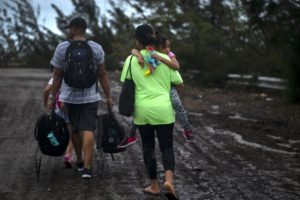
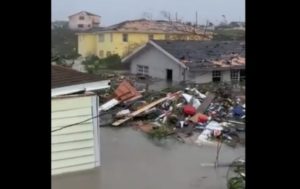
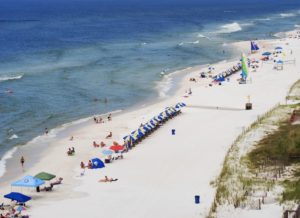
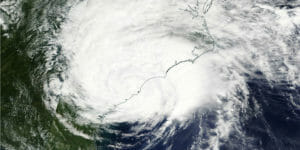
You need to be a supporter to comment.
There are currently no responses to this article.
Be the first to respond.